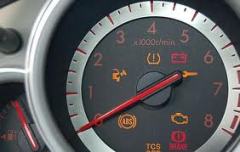What Does Each Warning Light Mean? - Vol.112
Warning lights are cautionary signals of hazard. They are your car's way of telling you that something is not right and needs attention.
The setting, number of lights and blinking pattern might differ based on the brand and model of your car. However, there are some standard warning lights that are found in almost every car. Some of them are explained below in detail:

The Bulb Check Up
To understand these lights, first it is important to understand the bulb checkup. When you start your car, all the lights on the dashboard must light up. If any bulb does not light up, it is a sign of a problem. The bulb might not be working, or the part it tells about has problems.
The lights blink for few seconds before they go out. If any light fails to go out, it is a sign of a problem.
Check Engine Light
It is a part of the car's onboard diagnostic system. Normally, it is a yellow indicator that asks you to 'check engine'. It is reserved to tell you about emission problems. At times, the light blinks and at times it remains constant, depending on the severity of the problem. If it is a red light, instead of the normal yellow light, then it needs urgent attention and must be taken care of quickly.
It is preferable to not start your car if the warning light is persistent, until you get the problem corrected.
Low Fuel Level Light
Make it a habit to always pay attention to this light when you go on a drive. This light tells the fuel level in your car tank. If the light keeps blinking, it means you are running out of fuel. Get it refilled before the tank gets used up.
Low Fluid or Coolant Level Light
This light, as the name suggests, is the indicator that the coolant level in your radiator is low and needs a refill. This must be paid immediate attention as low coolant level can harm your car in the long-run. This problem can easily be solved by refilling the radiator. However, when you do so, do it with caution as the radiator cap might be too hot, and may cause a burn.
Low Engine Oil Pressure Light
If this light is on, it means there is a low level of engine oil. The light illuminates for few seconds when the car is started. However, if it stays on or blinks during the journey, it means you need to take a look at the engine oil level, and top it up, if it is low.
Brake Warning Light
Most cars have brake lights on the dashboard. Normally, the car illuminates the brake lights to indicate some problem with the brake light, such as:
- Your car has poor brake pressure in the brake system
- Your car's emergency brake is on
If it signals the emergency brake, the problem can be easily solved. However, in case of poor brake pressure, a trip to a mechanic is required.
Battery Charge Warning Light
The light blinks when the ignition is switched on and goes off when the engine starts. However, if it fails to blink at all then it is a sign of a weak battery. Illuminating during driving also means that your battery is weak and not getting charged properly.
This can be due to a loose alternator drive belt or slack battery. This is a major problem and must be solved right away, because if the battery is weak, it will dry quickly, and may even cause damage to the engine.